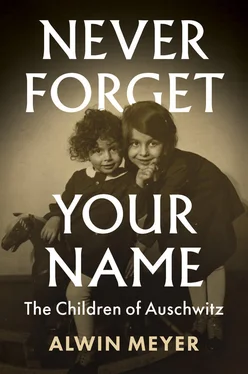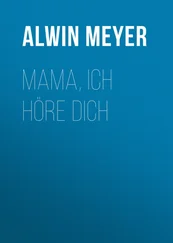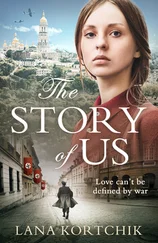The city received a further boost with the establishment of the Czechoslovak Republic in autumn 1918. Prior to that, Topol’čany had been part of Austria-Hungary. The republic recognized the Jewish minority as an ethnic group for the first time. The new democratic laws granted the Jews intellectual, religious and economic freedom.
There were great hopes for the future. Until well into the 1930s, a diverse Jewish life developed in the city. There were several synagogues, two cemeteries, a Talmud Torah school, a Jewish old people’s home, a soup kitchen for the needy, a kosher butcher, a matzo bakery, the Jewish primary school, Hashomer Hatzair (Young Guard) Socialist Zionist youth organization groups and the Maccabi Association for Body Culture. 109
‘For the most part, the Jews were an acknowledged part of the population. One of my uncles, Karl Pollak, was deputy mayor. And the mayor was always one of the first to buy a Jewish calendar at the start of the Jewish year. The Jews were fully integrated in the life of the city. At least, we thought so.’ Robert’s sister Ruth was born in 1933. Three years later, Robert started at the Jewish primary school. Lessons there were in Slovakian, German and Hebrew.
Herbert Adler spent the first years of his life in Dortmund. In 1938, at the age of 9, the Sinti boy moved with his parents and siblings to Frankfurt am Main after his father, a post office worker, had gained a promotion. Sinti and Roma had lived for many centuries in Europe. They were mentioned for the first time in Hildesheim in 1407. 110
Herbert Adler’s parents were born at the beginning of the twentieth century, his father in Debrecen, Hungary, and his mother in Berlin.
‘“Sinti” and “Roma” are words from the minority Romany language used in families as a second mother tongue besides the state language’, says Romani Rose, chairperson of the Central Council of German Sinti and Roma.
‘Sinti’ refers to members of the minority living in central Europe since the Middle Ages and ‘Roma’ to those of south-eastern European origin. Outside German-speaking circles, Roma – or simply Rom (which means person) – is used as an umbrella term for the entire minority. Romany is related to Sanskrit, the language of the ancient Indian subcontinent, indicating that India was the original birthplace of Sinti and Roma. The widely used term ‘gypsy’ … [is] rejected by many Sinti and Roma as discriminatory, as it is mostly spoken in a derogatory fashion. 111
When they moved to Frankfurt in 1938, the Adler family lived initially in a three-room apartment in Klappergasse in the Sachsenhausen district. The house was destroyed during the war and not rebuilt. When Herbert’s parents, Reinhold and Margarete Adler, had further siblings, they looked for a larger apartment. They ultimately found one at Löherstrasse 21 in Sachsenhausen, on the site of which a modern building now stands. ‘It was a nice five-room apartment with all the trimmings.’
Herbert went to the Frankensteiner School – at the time, for boys only. ‘Our class teacher was Mr Erb. He must have been around 40. He was like a fatherly friend to us. There were around thirty boys in the class. I was never victimized by teachers or fellow pupils. I liked it there a lot.’ He also felt at home with the Löhergass boys. ‘I was a real Frankfurt lad.’ Football was his great passion. ‘We would play for hours on the Mainwiese.’ He was nevertheless aware that ‘something was going on with the Jews.… But what exactly? That I didn’t know.’
However, he had no idea that, in August 1937, the first fifty-five Frankfurt Sinti and Roma families were interned in a camp in Dieselstrasse, 112near the Osthafen. His parents might have known, but they never spoke to him or his siblings about it.
‘One of my brothers was often hit by his gym teacher, a fanatical Nazi.’ And yet, if anyone had asked Herbert whether he was afraid, he would have looked at them wide-eyed and asked what he should be afraid of. They were ‘Germans, after all’, had work, a nice apartment – ‘Why should anything happen to us?’
1 1 For further details of Heinz Salvator Kounio and his family, see also Heinz Salvator Kounio, Ezisa to thanato: To imerologio tou arithmou 109565 (Thessaloniki 1982), and Kounio, A Liter of Soup and Sixty Grams of Bread: The Diary of Prisoner Number 109565 (New York 2003).
2 2 Hugo Gold, ed., Die Juden und Judengemeinden Böhmens in Vergangenheit und Gegenwart (Brno and Prague 1934), p. 255; see also I. Ziegler, Dokumente zur Geschichte der Juden in Karlsbad (1791–1869) (Karlsbad 1913), pp. 7–141.
3 3 Gustav Treixler, ‘Geschichte der Juden in Lichtenstadt, Neudek und St. Joachimstal’, in Gold, ed., Die Juden und Judengemeinden Böhmens, p. 378.
4 4 Gold, ed., Die Juden und Judengemeinden Böhmens, pp. 258–9.
5 5 Albertos Nar, ‘Die Juden von Thessaloniki’, in Niki Eideneier and Hans Eideneier, eds., Thessaloniki – Bilder einer Stadt (Cologne 1992), pp. 73–7; see also M. Atlas, ‘Was sah ich nach 500 Jahren von der Goldenen Zeit des Judentums in Spanien’, in Zeitschrift für die Geschichte der Juden, 3–4 (Tel Aviv 1965), pp. 175–82.
6 6 Georg Bossong, Die Sepharden – Geschichte und Kultur der spanischen Juden (Munich 2008), pp. 45–58, 92–4; Aron Rodrigue, ‘Der Balkan vom 15. bis 20. Jahrhundert’, in Elka-Vera Kotowski, Julius Schoeps and Hiltrud Wallenborn, eds., Handbuch zur Geschichte der Juden in Europa, Sonderausgabe (unmodified reprint in one volume of the 1st edition 2001) (Darmstadt 2012), pp. 296–9; Nar, ‘Die Juden von Thessaloniki’, p. 78; Ioannis K. Kassiotis, ‘Thessaloniki unter osmanischer Herrschaft’, in Eideneier and Eideneier, eds., Thessaloniki, p. 46.
7 7 Quoted from Die Welt, 28, 10 July 1903.
8 8 Joseph Nehama, ‘Zuflucht Saloniki: Die Sepharden im osmanischen Exil – Eine Auswahl (1492–1556)’, in Nehama, Histoire des Israélites de Salonique (Bochum 2005), pp. 90–9, 124–56; Manuel Gogos, ‘Saloniki – Mutter Israels’, in Niki Eideneier, ed., Die Sonnenblumen der Juden – Die Juden in der neugriechischen Literatur (Cologne 2006), pp. 18–28; Esther Benbassa and Aron Rodrigue, Die Geschichte der sephardischen Juden – Von Toledo bis Saloniki, trans. Lilli Herschhorn (Bochum 2005), pp. 96–101, 107–10 – original title: Histoire des Juifs séphardes: De Tolède à Salonique.
9 9 Charalambos K. Papastathis, ‘Bildungswesen und geistiges Leben in Thessaloniki zur Zeit der Osmanischen Herrschaft’, in Eideneier and Eideneier, eds., Thessaloniki, pp. 126–7.
10 10 Nar, ‘Die Juden von Thessaloniki’, p. 78.
11 11 S. Bénédict, ‘Das Schulwerk der Alliance in Saloniki’, in Ost und West, 1 (January 1907), pp. 64–6.
12 12 Benbassa and Rodrigue, Die Geschichte der sephardischen Juden, pp. 144–52.
13 13 Iakov Benmayor, ‘Thessaloniki Ir Va’ Em Be’ Israel’, in Cultural Forum of the Jewish Community of Thessaloniki, vol. I, Thessaloniki, 2nd edition (Thessaloniki 2005), p. 33; Gogos, ‘Saloniki’, p. 21.
14 14 Christos Safiris, ‘Die verwüstete “Mutter Israels” – Ruhmes- und Leidenstätten des Judentums in Thessaloniki’, in Eideneier, ed., Die Sonnenblumen, p. 11; see also Mor. J. Cohen, ‘Brief aus Saloniki’, in Die Welt, 24, 16 June 1899.
15 15 Elkan Nathan Adler, Jews in Many Lands (London 1905), p. 141.
16 16 Adler, Von Ghetto zu Ghetto – Reisen und Beobachtungen, Nachdruck, Nachwort und Erläuterung von Joachim Schlör (Teetz 2001), p. 214, back cover.
17 17 Adler, Jews in Many Lands, pp. 141–2.
18 18 Esriel Carlebach, Exotische Juden – Berichte und Studien (Berlin 1932), p. 19.
19 19 Nar, ‘Die Juden von Thessaloniki’, pp. 78–83; Benbassa and Rodrigue, Die Geschichte der sephardischen Juden, pp. 71–93; Rodrigue, ‘Der Balkan’, pp. 300–1; Nehama, ‘Zuflucht Saloniki‘, pp. 56–63, 109–15.
Читать дальше












